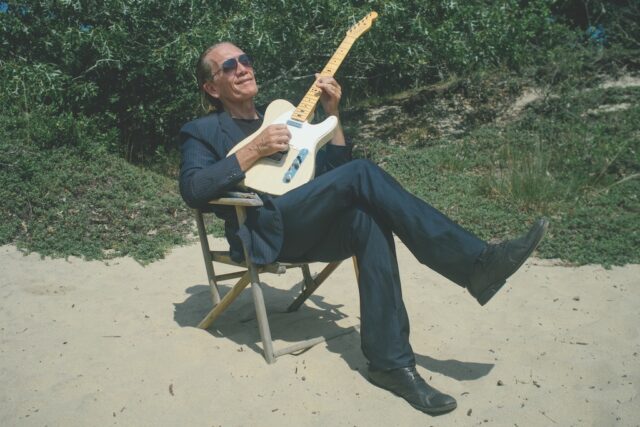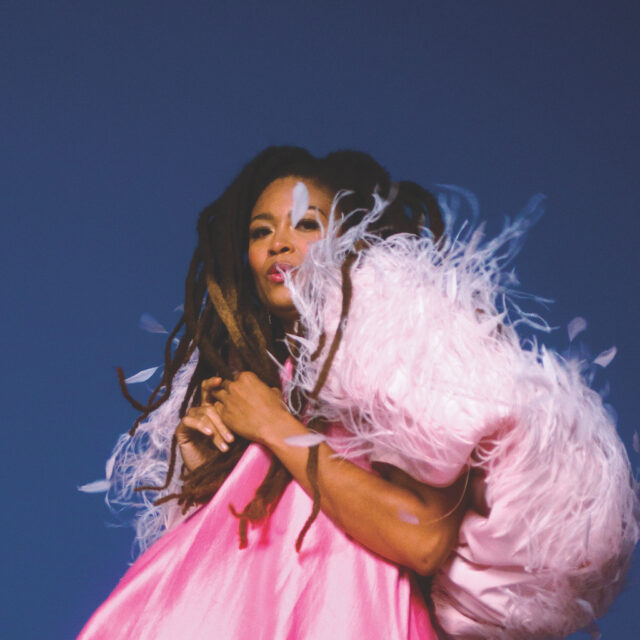
By Ray Rogers
Ray Rogers: I can’t wait to hear you two play together. Have you worked together before?
G.E. Smith: Twice. We did a little thing in East Hampton for Rolling Stone, and then we did a show in New York City together. I’ve gotten to play with a lot of people, but Valerie June is absolutely unique in what she does. It’s so joyful and free the way that she plays and sings.
RR: I feel that, too, when I listen to you, Valerie.
Valerie June: Well, thank you. Anytime I get to play with G.E. is a high time. I always learn something new. The last time we were together we did “Last Kind Words Blues,” which is a Geeshie Wiley song which I had loved for many years but I hadn’t sat down to play it.
GS: One of the things that I love about Val is that there was a song that over the years that I really love. It was done by a woman named Karen Dalton who was around in the Village in the early days with Bob Dylan in the early ’60s. In fact, one time I asked Bob if there was anybody who should have got famous back then that didn’t? He said ‘Oh yeah, Karen Dalton. She was better than anybody.’ Anyway, there’s this song called “Katie Cruel,” and I said to Valerie, ‘Have you ever heard this song?’ She goes, ‘Oh yeah, I do it.’ She already knows the song! Not a lot of people know that song. It’s fairly obscure and she does it—and she does it great.
RR: In your Portraits series, G.E., you bring a fascinating mix of talent out East that people here might not already know of. What was the impetus for this summer’s lineup?
GS: Portraits was my wife, Taylor Barton’s idea. We’re doing two this summer. The one with Valerie June, which is on August 15. Also on that bill is Lola Kirke, a singer we’ve known since she was a little kid because her father is Simon Kirke, the great drummer whom I often play with. Before that, we’re doing another Portraits on July 18 with Yola, another wonderful artist.

RR: Valerie, you’ve collaborated with so many diverse talents and covered all kinds of genres. Your Mazzy Star cover of “Fade Into You,” for one, is sublime. What excites you about playing the Portraits series with G.E.?
VJ: Meeting G.E. and listening to him play the guitar, that was the instant moment where I was like, OK, guitar god, I have to play some shows with you. And when he invited me to join him in New York City I was like, absolutely, I’m doing it. Anytime I get a chance to play with someone I can learn so much from on the guitar and just watch his fingers, I’m a student, I’m in awe. There’s so many beautiful ways that he plays and styles. He knows all the people that I’ve been a student of for so many years in the blues tradition and the Delta tradition. And so walking in with someone who knows all of the elders that I worship from the beginning and I don’t even have to explain why I like Skip James, Mississippi John Hurt, Elizabeth Cotten or Karen Dalton. He knows them already. It was like, OK, yeah. Let’s do it. Let’s try that. Let’s cover this. It’s a really wonderful kind of place for me to be able to play some of the music that I adore with someone who already knows how to get down on it and get the feel of the songs. Right now, I’m learning “Smokestack Lightning,” which is a Hubert Sumlin song, but also Howlin’ Wolf did it. There’s a certain feel to the song that you need to get in order to really play it, and he gets those feelings. You could play it all day long but if you don’t get the feel, you’re not going to play it right.
RR: Will you do a mix of your own songs and other covers at the Portraits show? What can we expect to hear?
VJ: Oh yeah. Absolutely. I did a song called “Big Dream” by a woman named Alice Randall. She’s a songwriter but she doesn’t really perform her own stuff. Lola also sang it. Since I do my own version of “Big Dream” and Lola has her own version, I think it would be really cool for us to create a version together of Alice’s song.
GS: That would be amazing. Is Alice around now?
VJ: She just put out a record called My Black Country and she has a bunch of young Black country singers covering her songs. She wrote a book, out right now, that’s also called My Black Country.
RR: Valerie, you’re such a purist in every way, from the soulful music you make to your workshops and teachings. How does your yoga and mindfulness teaching factor into your art, if it does?
VJ: I’m on the road 200 days a year, traveling and sharing art and music with the world. I stay balanced in all of that by connecting with spirit and keeping my mind and body in a space of connecting with the Earth, and seeing others in myself. I do that through breath work and doing yoga. Yoga means union, and union is the oneness not just with each human, but oneness with the planet. I find that my spirit practice is my music practice because when I go outside and I’m doing my yoga practice, I’m listening to the birds, I’m listening to whatever is happening—the water, the wind, the trees. That’s where I get the songs. I don’t think I would have one without the other. There’s music all around us all day.
GS: It’s all music.
RR: I love this question that’s featured on your website: Can creativity heal the world?
VJ: I think it can. Everything we see that’s man-made was somebody’s idea. They dreamed it up. They got creative. Even the bad stuff. Even the good stuff. So, why can’t we use our imaginations and our creativity to dream up some beautiful stuff? It’s simple to me. I’m like, OK, how did we come up with chocolate chip cookies? Well, somebody dreamed it up and now we get to enjoy them. I don’t know why it can’t be that way for all the things that we find complicated, too. Getting creative.
RR: You are also an author. This journal that you created, Light Beams: A Workbook for Being Your Badass Self, made me curious what you had in your life that helped you as a road map for being your own badass self?
VJ: The list goes on and on! At the end of the book, I’ve listed like a hundred people who have influenced me, from Toni Morrison to Octavia Butler. I’m just a sponge for amazing people of the arts. I read everything I can get my hands on, and I listen to all kinds of amazing music. I just think, What’s good from this? We are constantly facing challenges, and we’re constantly having to ask, What can I do to balance this today?
GS: Val, I love your optimism. It’s wonderful that even in these strange times that we live in, you can maintain that optimistic outlook. That is great. Because it is true. There is good stuff always.
RR: Does where you’re living and creating also affect the kind of music you make, or the creativity that comes out?
GS: Well, yeah. I love it here in the Hamptons. I first came here in 1979 and I got a house in 1981, so I’ve been here for a long time. I’ve been fortunate to travel to a lot of places in the world, but this is pretty special. It just makes me feel good to be here. When I feel good, I play good.
VJ: I feel the same. I need a nice balance between the energy of the city in Brooklyn and being able to play with other musicians, and being in the country in Tennessee and getting to see the great blue heron come to the pond and hang out for the morning when I’m having my tea, and I have to move quietly or he’ll fly away. Then at nighttime, the frogs come on and they’re a symphony of voices.
G. E. Smith’s Portraits series will take place at Guild Hall on July 18 with Yola and August 15 with Valerie June and Lola Kirke; guildhall.org.





